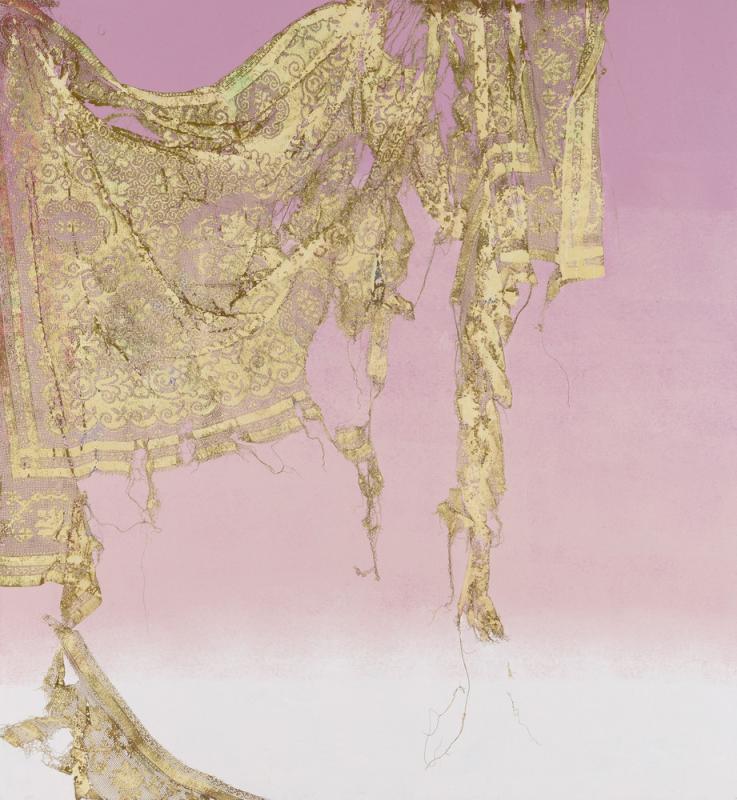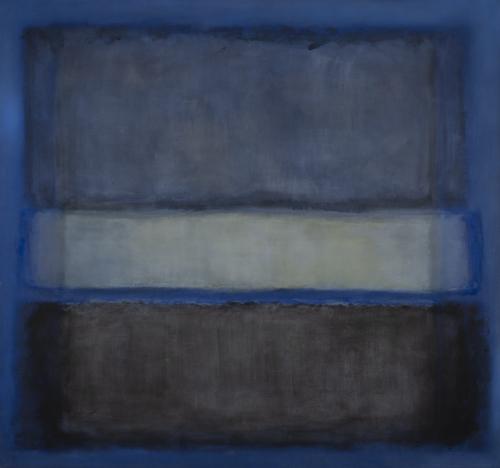Skip to main content
Trojan Horse
Artist
Mark Flood
(American, born 1957)
Date2003
MediumAcrylic on canvas
DimensionsUnframed: 78 × 72 in. (198.12 × 182.88 cm)
Credit LineCollection of the Modern Art Museum of Fort Worth, Museum purchase
Object number2004.2
Status
Not on viewCopyright© Mark Flood
Category
Label TextAround the year 2000, Mark Flood began making delicately patterned “lace paintings” by pressing tattered fragments of paint-soaked lace onto colored canvases. This constituted a shift away from the strident and darkly satirical text-based paintings that he had been producing since the early 1980s. What seems at first to be two divergent strands of expression, however, are linked by the artist’s anarchic spirit—often in regard to the politics of the art world itself.
Flood was born in Houston and graduated from Rice University in 1981. The artist remained relatively little known outside of Houston until he exhibited the lace paintings, the series to which the Modern’s Trojan Horse, 2003, belongs. Unabashedly decorative, the paintings’ lurid colors and filigree patterns nostalgically evoke traditions of craft and handiwork, while the frayed threads of the lace’s edges imply seedier notes of decadence and decay. Sometimes the lace shapes resemble specific images. The gold form in Trojan Horse vaguely resembles a right-facing profile view of the famed wooden horse from Greek mythology, its upper contour suggesting the curve of a horse’s head, neck, and back.
Flood was inspired to produce the lace paintings after reading the critic Dave Hickey’s 1993 polemic The Invisible Dragon: Four Essays on Beauty, which accused the contemporary art market and its audiences of turning against traditional concepts of beauty. The choice of lace, a material associated with decorative art, can also be understood to undermine the avant-garde pretensions of abstract art.
Flood was born in Houston and graduated from Rice University in 1981. The artist remained relatively little known outside of Houston until he exhibited the lace paintings, the series to which the Modern’s Trojan Horse, 2003, belongs. Unabashedly decorative, the paintings’ lurid colors and filigree patterns nostalgically evoke traditions of craft and handiwork, while the frayed threads of the lace’s edges imply seedier notes of decadence and decay. Sometimes the lace shapes resemble specific images. The gold form in Trojan Horse vaguely resembles a right-facing profile view of the famed wooden horse from Greek mythology, its upper contour suggesting the curve of a horse’s head, neck, and back.
Flood was inspired to produce the lace paintings after reading the critic Dave Hickey’s 1993 polemic The Invisible Dragon: Four Essays on Beauty, which accused the contemporary art market and its audiences of turning against traditional concepts of beauty. The choice of lace, a material associated with decorative art, can also be understood to undermine the avant-garde pretensions of abstract art.









